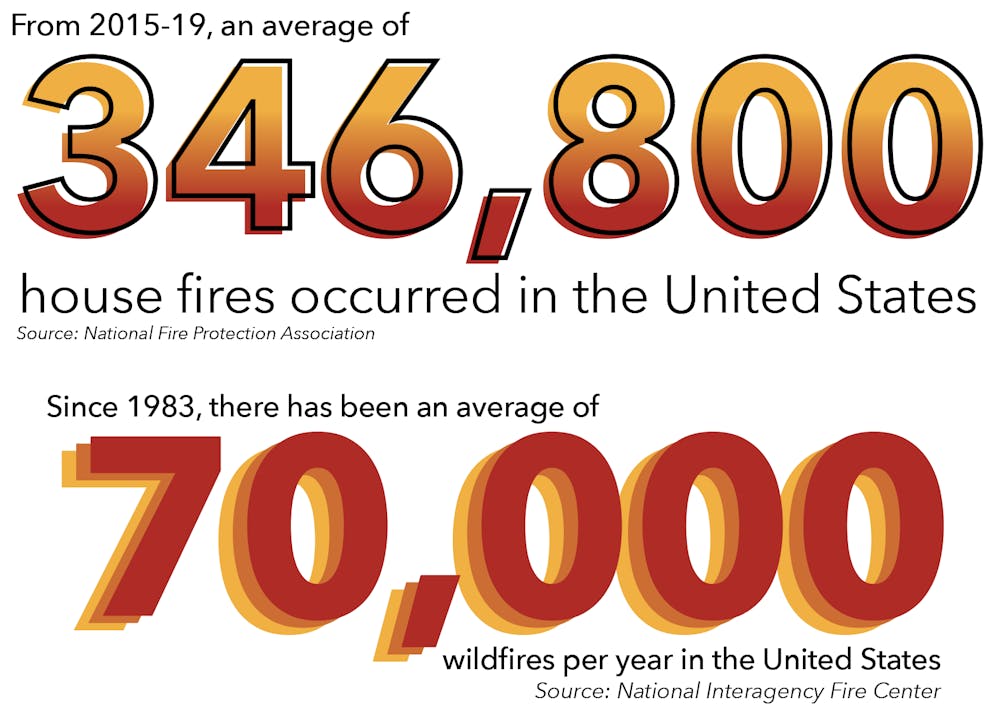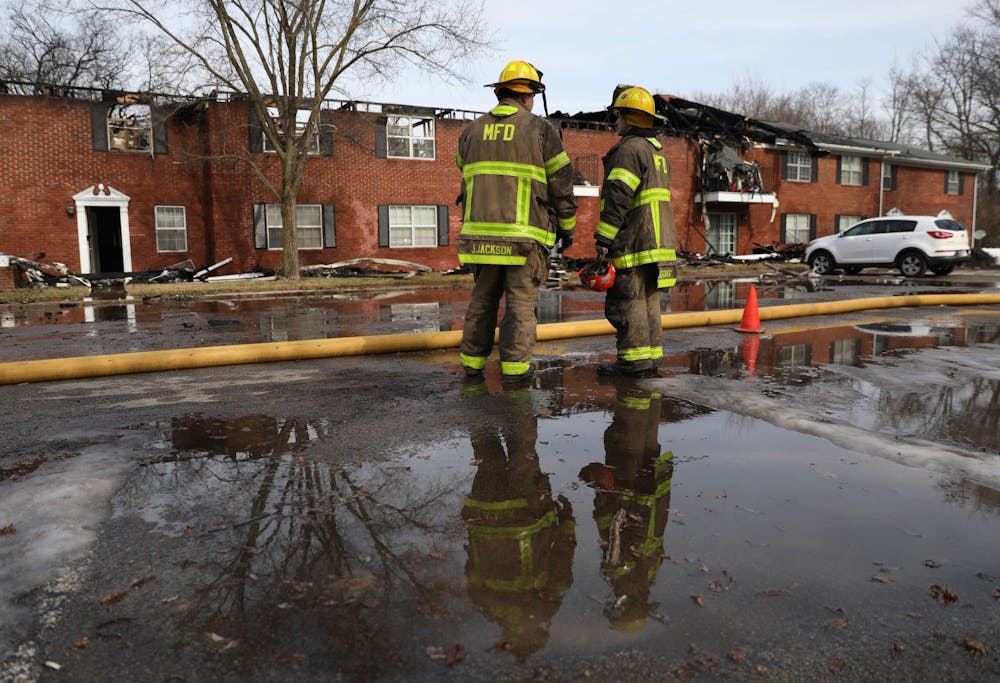John Taylor, land manager and restoration ecologist at Ball State University, remembered traveling to Kentucky in 2021 on a “red flag day.” A red flag day, or “red flag warning”, is when warm temperatures, dry areas and strong winds combine in a risk of wildfire.
Taylor said he stayed in a cabin on a steep hill around many other cabins. He remembered people nearby trying to have a bonfire in the fire ring outside their cabin, which immediately concerned him since he knew of the danger that would certainly follow if they were to light this fire.
Taylor said if he had not been around to warn these residents of the risk of wildfire, he is certain their fire would have gotten out of control and potentially burn down the cabins. Lately, he said, there have been many red flag days in Muncie
Taylor said while he stays informed about red flag days, it’s easy for the general public to not realize the everyday risks of wildfires and even house fires.
“There's a lot of things going on, and it's hard for people to pay attention to the things that are not immediately in front of them,” Taylor said. “They always say ‘An ounce of prevention is worth a pound of cure,’ so just being aware and taking a few minutes to test your smoke detector batteries, make sure you've got a fire extinguisher close to the kitchen, if you have a gas appliance, make sure you've got a CO2 detector.”
From 2015-19, an estimated average of 346,800 house fires occurred in the United States, according to the National Fire Protection Association (NFPA). Since 1983, the National Interagency Fire Center has reported an average of 70,000 wildfires per year in the U.S.

There is a cost to the large number of house fires and wildfires per year. According to the NFPA, an average of 2,620 civilian deaths, 11,070 civilian injuries and an estimated $7.3 billion in property damage occur due to house fires per year.
October is Fire Prevention Month, sparking events and campaigns across the nation to aid those in need with the goal of shrinking these averages. For example, the American Red Cross is running a Home Fire Campaign, where representatives in each state, separated by district, travel to homes and install smoke detectors and instruct residents on how to be fire safe.
To schedule a visit from the American Red Cross, visit their website. Additionally, organizations such as the Indiana state government and the NFPA are outlining ways to stay fire safe as a part of Fire Prevention Month
While October is officially Fire Prevention Month, people can learn through awareness, events, campaigns and anecdotes from others to stay fire safe year-round, keeping themselves and others safe.
Contact Kyle Smedley with comments via email at kyle.smedley@bsu.edu or on Twitter @smedley1932.





